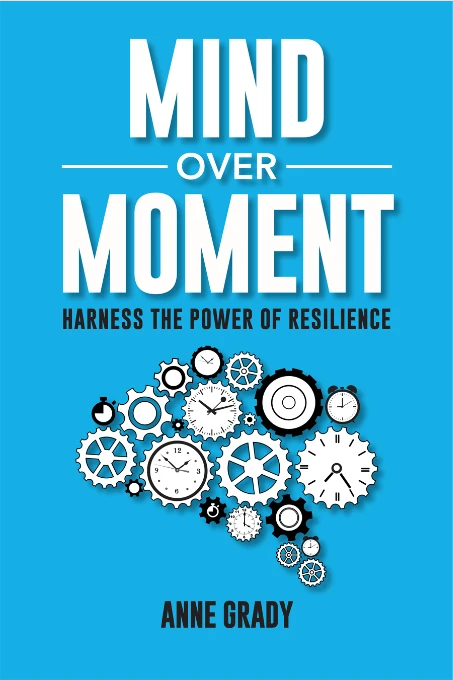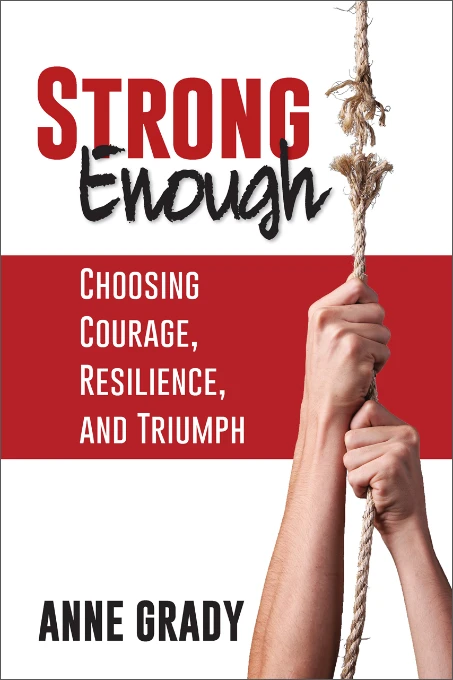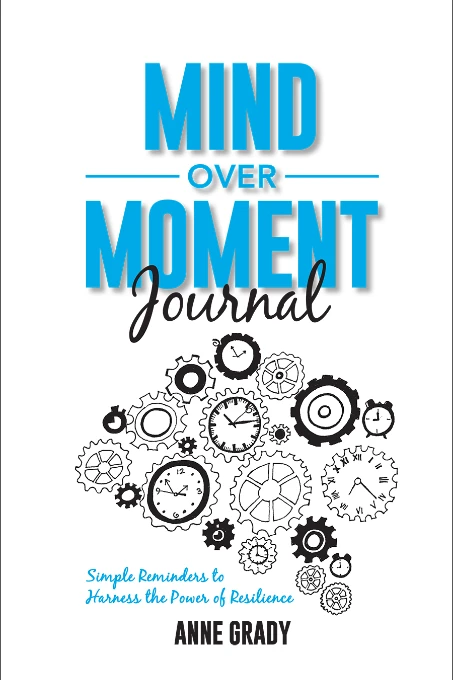5 Ways to Navigate Change (And Stay Sane!)
5 Ways to Navigate Change (And Stay Sane!)
5 Ways to Navigate Change (And Stay Sane!)
Navigating change can be tough. For example, take a moment and cross your arms. Now, cross them in the opposite direction. Which way was more awkward? If you thought crossing them the second time required more thought, you’re right. In fact, when you crossed them the first time, the signal came from a very different place in your brain than it did the second time.
Habits are the choices we make deliberately that at some point become automatic.
It’s true! And they make up over 45% of what we do every day. Your brain is lazy. It doesn’t know the difference between a good habit or a bad habit. It just takes everything you repeatedly think, say, or do and turns it into a habit so it doesn’t have to work so hard. When you crossed your arms the first time, your limbic system (the place that stores your memories and your habits) drove your actions. The second time you crossed your arms, the message came for the pre-frontal cortex, the part of the brain responsible for higher level thinking and planning. Any new thought or behavior starts in the pre-frontal cortex and eventually becomes habituated if we use it enough.
Most people resist change because it threatens their natural habit patterns.
Whether it’s a new role, a new boss, a new car, or a new diet, or new routine, your brain has to work overtime to learn to adapt to the change.
Unfortunately, as the old saying goes, “If you do what you’ve always done, you’ll get what you’ve always ________”. I bet you knew “gotten” was the last word. How did you know that? Habit.
Navigating change, both personally and professionally, requires you to form new habits, and that requires some discomfort. The more ingrained you are in the old way of doing things, the longer it takes to form new habits. The next time you are trying to navigate change, keep these things in mind.
#1 – You Can’t Counter Emotion with Logic
When we go through change, we often feel anxiety and fear the unknown. We may understand that the change logically makes sense, unfortunately, that does little to alleviate the discomfort associated with it. Give yourself time to process whatever emotions you are feeling. Get curious as to why you feel anxious or afraid. Don’t judge your feelings, just observe them. This is the first step to embracing change.
#2 – Identify Your WIIFM
Even when we know a change is for our own good, it’s easy to resist it, preferring our comfortable old habits. Take time to identify your W.I.I.F.M. (What’s In It For Me). This is your motivator and will keep you going through the discomfort. If you can’t identify a positive benefit, what loss are you trying to avoid?
#3 – Identify Barriers & Proactively Manage Them
Let’s say for example that your goal is to get healthier. This might mean exercising more, eating better, or getting enough sleep. Even though we know these are good for us, the barriers of time, money, laziness, or life get in the way. Trying to eat better? How can you plan your meals so that you have healthy food options wherever you are? Too tired to go to the gym after work? Sleep in your gym clothes and wake up 30 minutes early to go for a walk. Too tired? Don’t worry, exercise will help you get better sleep.
#4 – Surround Yourself with the Right People
We all have energy drainers in our life. These people are full of drama and stress. They are toxic and will make change extremely difficult. Identify the people in your life who you should spend more time with. Identify the people where you may need to create some distance.
#5 – Keep the Big Picture in Mind
When we are approaching a change, it can seem monumental. When we’ve made it through to the other side, it’s easy to look back with perspective and call it growth. Keep this in mind as you encounter adversity, challenge, and change in your life. So far, you’ve navigated every change thrown your way. That’s a pretty good track record.
Change can be scary, but by taking some time to proactively manage the process, you can better set yourself up for success.

Anne Grady is a Speaker, Author, and #TruthBomb Dropper.
Anne shares practical strategies that can be applied both personally and professionally to improve relationships, navigate change, and triumph over adversity. And she’ll make you laugh while she does it. Anne is a two time TEDx speaker, and her work has been featured in numerous media outlets, including Harvard Business Review, Entrepreneur, Forbes, Fast Company and Inc. magazines, CNN, ESPN, and FOX Business. She is the best selling author of Mind Over Moment: Harness the Power of Resilience, 52 Strategies for Life, Love & Work, and Strong Enough: Choosing Courage, Resilience and Triumph.
I had an incredible time chatting with @dr.cindyspeaks on Positively Altered about one of my favorite topics >> resilience!
💪 We covered everything from how stress affects the brain to actionable strategies for resetting your resilience and reclaiming balance. Plus… we even talked donkeys!
🎧 Listen here: https://podcasts.apple.com/us/podcast/episode-23-the-resilience-reset-transforming-stress/id1773804535?i=1000699134975
In this episode, we dive into:
🧠 How to train your brain for resilience
😩 The power of sitting in the “suck”
💡 Simple strategies to reset stress and find balance
If you’re ready to transform stress into strength, this one’s for you!
What is on your to-do list for the week? ✅
I’m sure it includes meetings, tasks, personal chores, and follow-ups, but does it include things that bring you joy?
Instead of waiting for happiness, create it.. You can even focus on enjoyable things while doing the have-to do things.
Slogging through paperwork? Light a candle and listen to your favorite tunes.
Going for a drive? Listen to a stand-up comic or a great book.
Don’t neglect what brings you joy and happiness—make it a ritual and part of your resilience-building routine.
You know that heart-stopping moment when you try to change lanes, only to realize that someone is in your blind spot?
Blind spots aren’t just for driving. In life and leadership, we all have blind spots—things others see clearly that we don’t.
The tricky part? Blind spots aren’t always glaring flaws. Often, they’re our good intentions getting lost in translation. So, how do you uncover them?
Here’s a simple twist that will make a big difference: Ask for advice instead of feedback. 🗣
This slight shift makes people more likely to offer constructive, actionable insights—without triggering defensiveness. Plus, it builds trust and strengthens relationships.
Rather than trying to make drastic changes, pick one behavior and integrate it into your day.
Want to start a gratitude practice? Do it while you brush your teeth. Want to take deep breaths? Practice while you make coffee. Adding a new habit to an existing one makes it easier to stick with it.
#mindfulmonday #habitstacking #atomichabits #jamesclear
Humor changes your biochemistry, emotions, thoughts, and behavior. 😆
A positive mood boosts your immune system! Whether you find your laughter through being around friends, going to a comedy show, watching funny movies, or just being goofy, don’t underestimate the power of a belly laugh and a sense of humor.






